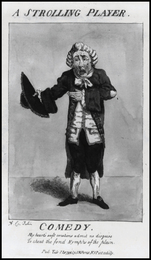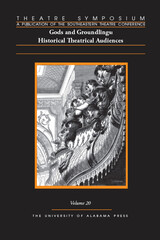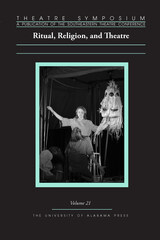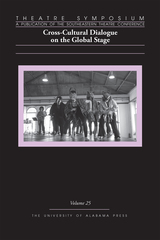
For centuries scholars, philosophers, and practitioners have attempted to explain just what constitutes comedy, and though no one has come close to a definitive explanation, each attempt highlights some distinct facet of the genre--the genre that Woody Allen has said eats at the children’s table . . . even in the world of scholarship.
The essays gathered in Volume 16 of the annual journal Theatre Symposium illustrate well the range of material that falls under the heading “comedy” as it is played on stage.
Stanley Longman’s essay on “The Commedia dell’Arte as the Quintessence of Comedy” introduces us to the inhabitants of “Commediatown,” character types who are descendents of the Greeks and ancestors, it seems, of almost everyone who came after. Boris Senker, an eyewitness to Croatia’s evolution from communism to democracy, reports on the all-too-real "Commedia" stereotypes that have found their way onto the stage in his homeland.
Other essays address the improvisational nature of "Commedia"; the roots of laughter and the expectations inherent in presenting “old schtick” to a new generation; comedic technique, verbal and physical, in Molière; the use of the macabre to create humor in the "Théâtre du Grand Guignol"; the story of Henry Fielding, the theatre practitioner most responsible for the British government’s crackdown on subversive material, via the Licensing Act of 1737; Beckett’s theatrical connections to the comedy theory of Henri Bergson; and do-it-yourself (DIY) comedy--happenings, situations, gatherings—as practiced in British stand-up comedy.
Theatre Symposium: Volume 16 provides just a glimpse into the possibilities for comedy on the stage. If the past examples allow for extrapolation into the future, the position of comedy as a means of communicating problems and solutions for society’s woes is remarkably sound.

transvestite theatre, Annie Oakley and the disruption of Victorian audiences, and historical attempts to create ideal audiences. Edited by E. Bert Wallace, this latest publication from the largest regional theatre organization in the United States collects the most current scholarship on theatre history and theory.
Contributors To Volume 20
Susan Bennett / Jane Barnette / Becky Becker / Lisa Bernd / Evan
Bridenstine / Michael Jaros / Robert I. Lublin / Paulette Marty

Whether or not theatre arose from ritual and/or religion, from prehistory to the present there have been clear and vital connections among the three. Ritual, Religion, and Theatre, volume 21 of the annual journal Theatre Symposium, presents a series of essays that explore the intricate and vital relationships that exist, historically and today, between these various modes of expression and performance.
The essays in this volume discuss the stage presence of the spiritual meme; ritual performance and spirituality in The Living Theatre; theatricality, themes, and theology in James Weldon Johnson’s God’s Trombones; Jordan Harrison’s Act a Lady and the ritual of queerness; Gerpla and national identity in Iceland; confession in Hamlet and Measure for Measure; Christian liturgical drama; Muslim theatre and performance; cave rituals and the Brain’s Theatre; and other, more general issues.
Edited by E. Bert Wallace, this latest publication by the largest regional theatre organization in the United States collects the most current scholarship on theatre history and theory.
CONTRIBUTORS
Cohen Ambrose / David Callaghan / Gregory S. Carr
Matt DiCintio / William Doan / Tom F. Driver / Steve Earnest
Jennifer Flaherty / Charles A. Gillespie / Thomas L. King
Justin Kosec / Mark Pizzato / Kate Stratton

Globalization may strike many as a phenomenon of our own historical moment, but it is truly as old as civilization: we need only look to the ancient Silk Road linking the Far East to the Mediterranean in order to find some of the earliest recorded impacts of people and goods crossing borders. Yet, in the current cultural moment, tensions are high due to increased migration, economic unpredictability, complicated acts of local and global terror, and heightened political divisions all over the world.
Thus globalization seems new and a threat to our ways of life, to our nations, and to our cultures. In what ways have theatre practitioners, educators, and scholars worked to support cross-cultural dialogue historically? And in what ways might theatre embrace the complexities and contradictions inherent in any meaningful exchange? The essays in Theatre Symposium, Volume 25 reflect on these questions.
Featured in Theatre Symposium, Volume 25
- “Theatre as Cultural Exchange: Stages and Studios of Learning” by Anita Gonzalez
- “Certain Kinds of Dances Used among Them: An Initial Inquiry into Colonial Spanish Encounters with the Areytos of the Taíno in Puerto Rico” by E. Bert Wallace
- “Gertrude Hoffmann’s Lawful Piracy: ‘A Vision of Salome’ and the Russian Season as Transatlantic Production Impersonations” by Sunny Stalter-Pace
- “Greasing the Global: Princess Lotus Blossom and the Fabrication of the ‘Orient’ to Pitch Products in the American Medicine Show” by Chase Bringardner
- “Dismembering Tennessee Williams: The Global Context of Lee Breuer’s A Streetcar Named Desire” by Daniel Ciba
- “Transformative Cross-Cultural Dialogue in Prague: Americans Creating Czech History Plays” by Karen Berman
- “Finding Common Ground: Lessac Training across Cultures” by Erica Tobolski and Deborah A. Kinghorn
READERS
Browse our collection.
PUBLISHERS
See BiblioVault's publisher services.
STUDENT SERVICES
Files for college accessibility offices.
UChicago Accessibility Resources
home | accessibility | search | about | contact us
BiblioVault ® 2001 - 2024
The University of Chicago Press









